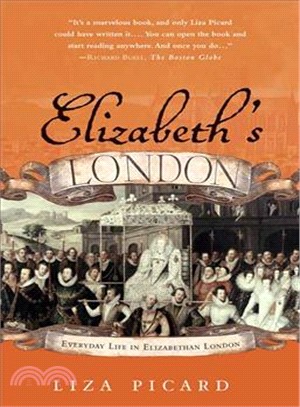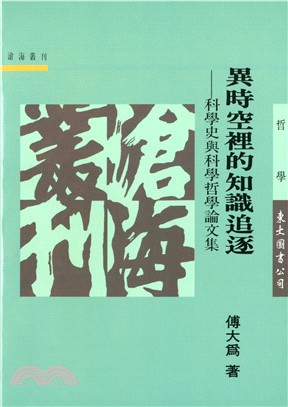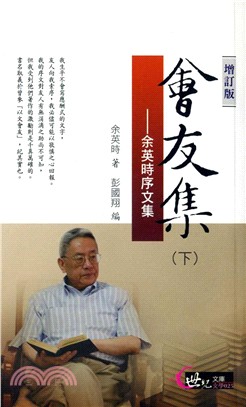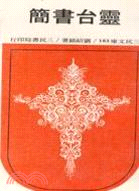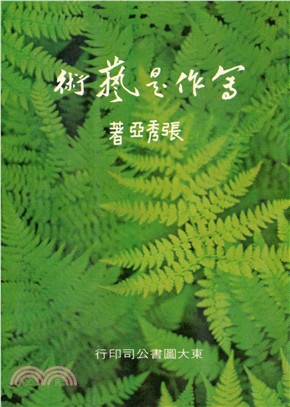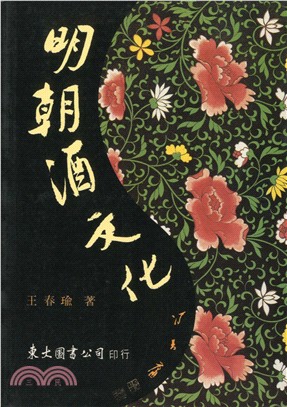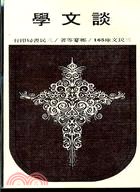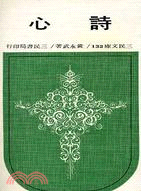Elizabeth's London ─ Everyday Life In Elizabethan London
商品資訊
ISBN13:9780312325664
出版社:Griffin
作者:Liza Picard
出版日:2005/06/01
裝訂:平裝
規格:23.5cm*15.9cm*2.5cm (高/寬/厚)
商品簡介
作者簡介
相關商品
商品簡介
This picture of the London of Queen Elizabeth (1558-1603) is the result of Liza Picard's curiosity about the practical details of daily life that almost every history book ignores. As seen in her two previous, highly acclaimed books-Restoration London and Dr. Johnson's London-she has immersed herself in contemporary sources of every kind. She begins with the River Thames, the lifeblood of Elizabethan London. The city, on the north bank of the river, was still largely confined within old Roman walls. Upriver at Westminster were the royal palaces, and between them and the crowded city the mansions of the great and the good commanded the river frontage. She shows us the interior d?cor of the rich and the not-so-rich, and what they were likely to be growing in their gardens. Then the Londoners of the time take the stage, in all their amazing finery. Plague, small-pox, and other diseases afflicted them. But food and drink, sex and marriage and family life provided comfort, a good education was always useful, and cares could be forgotten in a playhouse or the bear-baiting rings, or watching a good cockfight. Liza Picard's wonderfully skillful and vivid evocation of the London of four hundred years ago enables us to share the delights, as well as the horrors, of the everyday lives of sixteenth century Britain.
Liza Picard was born in 1927. She read law at the London School of Economics and was called to the Bar by Gray's Inn, but did not practice. She worked in London for many years in the office of the Solicitor of Inland Revenue until she retired in 1987. She now lives in Oxford. Picard is also the author of the critically acclaimed studies Restoration London and Dr. Johnson's London. This vivid and complete historical picture of the London of Queen Elizabeth (1558-1603) is the result of Liza Picard's curiosity about the practical details of daily life that most history books ignore. As seen in her two previous and highly acclaimed booksRestoration London and Dr. Johnson's Londonthis author is most gifted in her ability to immerse herself in contemporary sources of every kind.
Picard begins with the River Thames, the lifeblood of the city in Elizabethan times. London proper, on the north bank of the river, was still largely confined within its old Roman walls. Upriver at Westminster were the royal palaces, and between them and the crowded city the mansions of the great and the good commanded the river frontage. the author turns her spotlight on the streets and the traffic in them. She surveys buildings and building methodsLondon was a vast development site as the former monastic properties were absorbed into the housing stockand shows us the interior décor of the rich and the not-so-rich, and what both camps were likely to be growing in their gardens.
Next the Londoners themselves are explored, in all their amazing finery. Plague, smallpox, and other diseases afflicted them. But food and drink, sex and marriage, work and family life all provided comfort, a good education was always useful, and cares could be forgotten in a playhouse or in the bull-baiting or bear-baiting ringsor by watching a good cockfight.
Immigrants from the Low Countries and France posed problems. Londoners were proud of the religious tolerance that attracted Protestant victims from the Continent, but were not so sure about how these skillful migrants might affect their own livelihoods. This was a city ruled by the livery companies and their apprentice system, and thus foreigners were closely watched. For many, poverty was never far away. And Henry VIII's destruction of the monasteries had caused an acute crisis in poverty management. Begging was one answer. Forcing the wealthy to pay for the poorthrough a parochial poor ratewas another.
Picard's wonderfully skillful and meticulous evocation of the London of four hundred years ago enables all students and scholars to share in the common delightsand the constant horrorsof 16th-century Britons. "A marvelous book, and only Liza Picard could have written it . . . You can open the book and start reading anywhere. And once you do . . ."The Boston Globe "Every chapter is filled with incident and accident . . . A wonderfully evocative portrait of this lively, if squalid, city."Giles Milton, Living History "Lively guide to Elizabethan England."The Washington Post "A marvelous book, and only Liza Picard could have written it . . . You can open the book and start reading anywhere. And once you do . . ."The Boston Globe "Reading this book is like taking a ride on a marvelously exhilarating time machine, alive with color, surprise, and sheer merriment."Jan Morris, New Statesman "Every chapter is filled with incident and accident . . . A wonderfully evocative portrait of this lively, if squalid, city."Giles Milton, Living History "Elizabeth's London is, like its predecessors, a storehouse of fascinating information. Every page contains a nugget."Lucy Moore, Daily Mail "As highly readable as [Picard's] earlier examinations of Restoration and Georgian London."Financial Times "Picard's latest historical guided tour, of 16th-century London, entertainingly rounds out her trilogy (with Dr. Johnson's London and Restoration London) revisiting the great city's past . . . Picard ably sifts through an enormous variety of records, letters, books, and other accounts to re-create the urban expanse. Starting with topography and architecture, Picard takes her readers across the Thames and through the neighborhoods of the emergent metropolis, noting the housing and development boom touched off by Henry VIII's appropriation of papal real estate. Her tour continues through every aspect of Elizabethan life, from clothes and food to family and education, from crime and law to jobs and welfare. In such a wide-ranging scheme, the theater, along with other entertainments, is only one aspect of a flourishing society . . . This vibrant social history makes the city of five centuries ago seem as alive as today's, if not more."Publishers Weekly "From the Thames to witchcraft, from petty schools to bear-baiting, from Shakespeare to small beera succinct guide to the sights, sounds, and smells of the London of the Virgin Queen. This is Picard's third stroll through the history of London's evolving streets, and like her other accounts, this one features the arresting detail, the perfect anecdote, the apt quotation. We learn that Elizabeth's Thames barge had glass windows, that London Bridge, crowded with houses and business, had three gaps for sightseers, that kites and pigs took care of much of the street refuse (while supplying some more), that an Elizabethan woman was old at 40, that the Queen's touch might well cure what ailed you, that codpieces gradually diminished in size during her reign, and that men wore no underpants but got along tolerably well with long shirt tails. Picard offers a stunning account of an impromptu brain surgery one afternoon at the Bear Garden, detailed instructions on how to erect a timber-frame house and how to put together a ruff collar (some had 600 pleats). She teaches us about medical care (so very primitive), childbirth (how any woman survived it is a mystery), and burial practices. She describes the various levels of ecclesiastical and civic organization in the city (parish, ward); she shows us what went on in taverns and on tennis courts, in Bethlehem Hospital ('Bedlam') and the Globe Theatre (she advises a visit to the New Globe); she explains the workings of the 12 great livery companies (grocers, drapers, salters, etc.). She reminds us that educated men were expected to be able to sightsing in partsand to play the lute (barbers kept one handy for waiting customers to strum). She reminds us, as well, that children and women were little more than property. Punishments were public and harsh (hanging for buggery and hawk-stealing). The detail is rich and remarkable."Kirkus Reviews
Liza Picard was born in 1927. She read law at the London School of Economics and was called to the Bar by Gray's Inn, but did not practice. She worked in London for many years in the office of the Solicitor of Inland Revenue until she retired in 1987. She now lives in Oxford. Picard is also the author of the critically acclaimed studies Restoration London and Dr. Johnson's London. This vivid and complete historical picture of the London of Queen Elizabeth (1558-1603) is the result of Liza Picard's curiosity about the practical details of daily life that most history books ignore. As seen in her two previous and highly acclaimed booksRestoration London and Dr. Johnson's Londonthis author is most gifted in her ability to immerse herself in contemporary sources of every kind.
Picard begins with the River Thames, the lifeblood of the city in Elizabethan times. London proper, on the north bank of the river, was still largely confined within its old Roman walls. Upriver at Westminster were the royal palaces, and between them and the crowded city the mansions of the great and the good commanded the river frontage. the author turns her spotlight on the streets and the traffic in them. She surveys buildings and building methodsLondon was a vast development site as the former monastic properties were absorbed into the housing stockand shows us the interior décor of the rich and the not-so-rich, and what both camps were likely to be growing in their gardens.
Next the Londoners themselves are explored, in all their amazing finery. Plague, smallpox, and other diseases afflicted them. But food and drink, sex and marriage, work and family life all provided comfort, a good education was always useful, and cares could be forgotten in a playhouse or in the bull-baiting or bear-baiting ringsor by watching a good cockfight.
Immigrants from the Low Countries and France posed problems. Londoners were proud of the religious tolerance that attracted Protestant victims from the Continent, but were not so sure about how these skillful migrants might affect their own livelihoods. This was a city ruled by the livery companies and their apprentice system, and thus foreigners were closely watched. For many, poverty was never far away. And Henry VIII's destruction of the monasteries had caused an acute crisis in poverty management. Begging was one answer. Forcing the wealthy to pay for the poorthrough a parochial poor ratewas another.
Picard's wonderfully skillful and meticulous evocation of the London of four hundred years ago enables all students and scholars to share in the common delightsand the constant horrorsof 16th-century Britons. "A marvelous book, and only Liza Picard could have written it . . . You can open the book and start reading anywhere. And once you do . . ."The Boston Globe "Every chapter is filled with incident and accident . . . A wonderfully evocative portrait of this lively, if squalid, city."Giles Milton, Living History "Lively guide to Elizabethan England."The Washington Post "A marvelous book, and only Liza Picard could have written it . . . You can open the book and start reading anywhere. And once you do . . ."The Boston Globe "Reading this book is like taking a ride on a marvelously exhilarating time machine, alive with color, surprise, and sheer merriment."Jan Morris, New Statesman "Every chapter is filled with incident and accident . . . A wonderfully evocative portrait of this lively, if squalid, city."Giles Milton, Living History "Elizabeth's London is, like its predecessors, a storehouse of fascinating information. Every page contains a nugget."Lucy Moore, Daily Mail "As highly readable as [Picard's] earlier examinations of Restoration and Georgian London."Financial Times "Picard's latest historical guided tour, of 16th-century London, entertainingly rounds out her trilogy (with Dr. Johnson's London and Restoration London) revisiting the great city's past . . . Picard ably sifts through an enormous variety of records, letters, books, and other accounts to re-create the urban expanse. Starting with topography and architecture, Picard takes her readers across the Thames and through the neighborhoods of the emergent metropolis, noting the housing and development boom touched off by Henry VIII's appropriation of papal real estate. Her tour continues through every aspect of Elizabethan life, from clothes and food to family and education, from crime and law to jobs and welfare. In such a wide-ranging scheme, the theater, along with other entertainments, is only one aspect of a flourishing society . . . This vibrant social history makes the city of five centuries ago seem as alive as today's, if not more."Publishers Weekly "From the Thames to witchcraft, from petty schools to bear-baiting, from Shakespeare to small beera succinct guide to the sights, sounds, and smells of the London of the Virgin Queen. This is Picard's third stroll through the history of London's evolving streets, and like her other accounts, this one features the arresting detail, the perfect anecdote, the apt quotation. We learn that Elizabeth's Thames barge had glass windows, that London Bridge, crowded with houses and business, had three gaps for sightseers, that kites and pigs took care of much of the street refuse (while supplying some more), that an Elizabethan woman was old at 40, that the Queen's touch might well cure what ailed you, that codpieces gradually diminished in size during her reign, and that men wore no underpants but got along tolerably well with long shirt tails. Picard offers a stunning account of an impromptu brain surgery one afternoon at the Bear Garden, detailed instructions on how to erect a timber-frame house and how to put together a ruff collar (some had 600 pleats). She teaches us about medical care (so very primitive), childbirth (how any woman survived it is a mystery), and burial practices. She describes the various levels of ecclesiastical and civic organization in the city (parish, ward); she shows us what went on in taverns and on tennis courts, in Bethlehem Hospital ('Bedlam') and the Globe Theatre (she advises a visit to the New Globe); she explains the workings of the 12 great livery companies (grocers, drapers, salters, etc.). She reminds us that educated men were expected to be able to sightsing in partsand to play the lute (barbers kept one handy for waiting customers to strum). She reminds us, as well, that children and women were little more than property. Punishments were public and harsh (hanging for buggery and hawk-stealing). The detail is rich and remarkable."Kirkus Reviews
作者簡介
LIZA PICARD was born in Essex in 1927.She is the author of Restoration London and Dr.Johnson's London.
主題書展
更多
主題書展
更多書展今日66折
您曾經瀏覽過的商品
購物須知
外文書商品之書封,為出版社提供之樣本。實際出貨商品,以出版社所提供之現有版本為主。部份書籍,因出版社供應狀況特殊,匯率將依實際狀況做調整。
無庫存之商品,在您完成訂單程序之後,將以空運的方式為你下單調貨。為了縮短等待的時間,建議您將外文書與其他商品分開下單,以獲得最快的取貨速度,平均調貨時間為1~2個月。
為了保護您的權益,「三民網路書店」提供會員七日商品鑑賞期(收到商品為起始日)。
若要辦理退貨,請在商品鑑賞期內寄回,且商品必須是全新狀態與完整包裝(商品、附件、發票、隨貨贈品等)否則恕不接受退貨。



